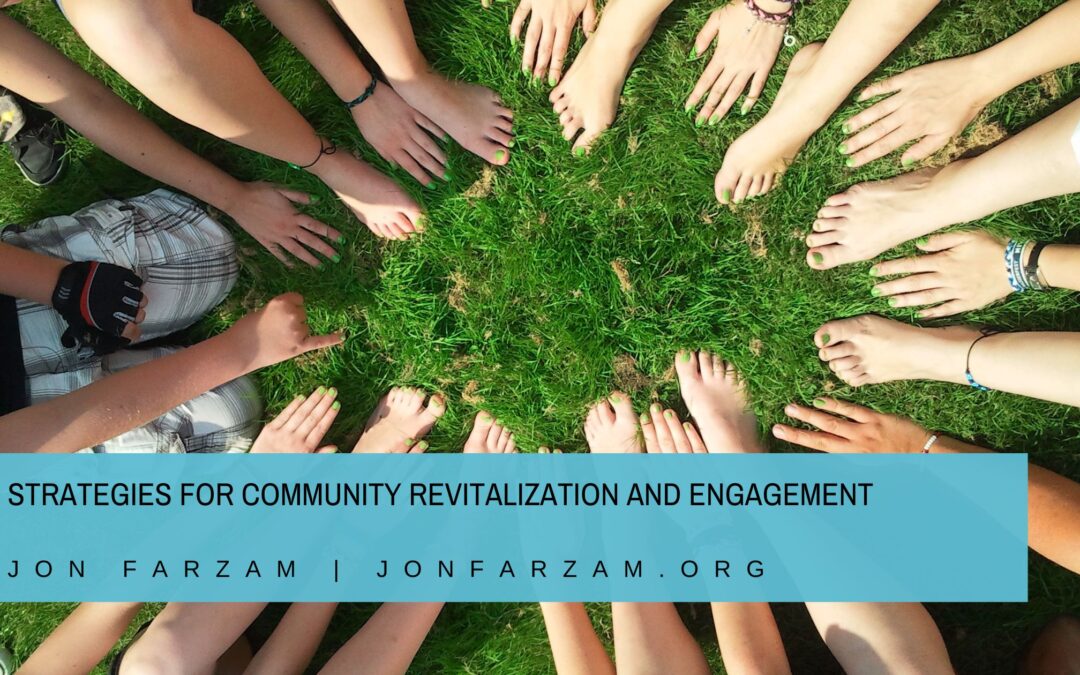Communities are the lifeblood of society, and their well-being is crucial for any region’s overall health and prosperity. However, many communities face economic decline, social disconnection, and deteriorating infrastructure. A strategic approach is necessary to address these issues and promote community revitalization and engagement.
Community-Based Planning
An effective community revitalization project starts with community-based planning. Engaging residents, businesses, and organizations in the decision-making process is essential. Conducting surveys, hosting town hall meetings, and forming community task forces can help identify specific needs and priorities. This approach ensures that the revitalization efforts align with the desires and values of the community.
Investment in Infrastructure
Infrastructure plays a pivotal role in community revitalization. Upgrading roads, parks, schools, and public facilities enhances the overall quality of life and attracts businesses and residents. Public-private partnerships can be valuable in financing these improvements, as they distribute the cost and risks among various stakeholders.
Economic Diversification
Over-reliance on a single industry can leave a community vulnerable to economic downturns. Diversifying the local economy by encouraging entrepreneurship and supporting small businesses can create job opportunities and stimulate growth. Incubators, business development programs, and access to capital are vital components of this strategy.
Preservation of Cultural Heritage
Every community has a unique history and cultural identity. Preserving and celebrating these aspects can instill a sense of pride and belonging among residents. Historical preservation initiatives, cultural festivals, and heritage tourism can promote engagement and attract visitors and investment.
Affordable Housing Initiatives
Affordable housing is a fundamental requirement for a thriving community. Developing affordable housing options can prevent the displacement of long-term residents and ensure that a diverse range of people can call the community home. Government incentives, zoning reforms, and partnerships with nonprofit organizations can facilitate the creation of affordable housing.
Community Gardens and Green Spaces
Green spaces have numerous benefits, including improving mental health, fostering social connections, and enhancing the environment. Community gardens and parks provide residents with places to gather, exercise, and grow food. These spaces also offer opportunities for volunteerism and community-building projects.
Youth Engagement Programs
Engaging young people in community revitalization efforts is essential for the long-term sustainability of any community. After-school programs, mentorship opportunities, and youth councils can empower young residents to shape the community’s future. Investing in education and skill-building programs can also prepare them for the workforce.
Digital Connectivity
In today’s digital age, access to high-speed internet is crucial for community development. It opens up opportunities for remote work, online education, and e-commerce. Local governments should prioritize improving broadband infrastructure to ensure residents can access the necessary digital tools and resources.
Promotion of Arts and Culture
Arts and culture can be powerful tools for community engagement. Supporting local artists, galleries, and cultural events can create a vibrant arts scene that attracts residents and visitors. Art initiatives can also be used for storytelling, preserving local history, and promoting social cohesion.
Collaborative Partnerships
Community revitalization is more than just a one-person job. It requires collaboration among government agencies, nonprofit organizations, local businesses, and residents. By fostering partnerships and cooperation, communities can leverage resources, expertise, and collective energy to tackle complex challenges more effectively.
Community revitalization and engagement are ongoing processes that require dedication, patience, and adaptability. These strategies are not one-size-fits-all solutions; instead, they should be tailored to each community’s unique needs and circumstances. With a commitment to inclusivity, sustainability, and the well-being of its residents, any community can embark on a journey towards revitalization and create a brighter future for all.

